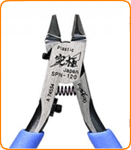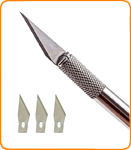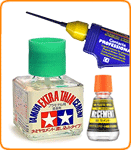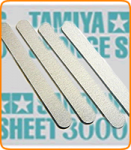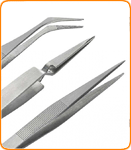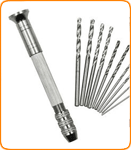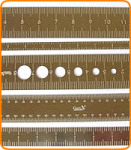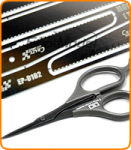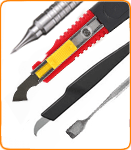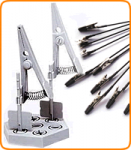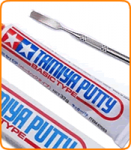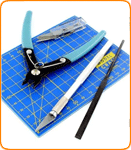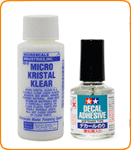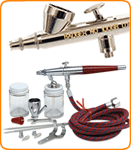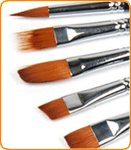Wingnut Wings 32055 1/32 WWI British Sopwith Pup "Gnome" Single-seater Biplane Fighter
Relatively simple rigging
High quality Cartograf decals for 5 aircraft
151 high quality injection moulded plastic parts
Optional side cowls, engine cowls, propellers, LePrieur rockets and Gnome engines
2 highly detailed 28 part 80hp and 100hp Gnome engines
9 photo-etched metal detail parts
Fine in scale rib tape detail
Full rigging diagrams
Sopwith"s wonderful Pup was developed from a design that their test pilot, Harry Hawker, legendarily chalked out on the factory floor for his own personal runabout in the latter stages of 1915. Featuring wing warping technology this runabout formed the basis for the Sopwith Sparrow of which only 4 were made. In February 1916 Sopwith took it upon themselves to produce a single seat fighter prototype based on this design, slightly redesigned, strengthened and with ailerons replacing wing warping for lateral control. Given the serial number 3691, this prototype attracted the attention of the Royal Naval Air Service (RNAS) who were suitably impressed enough to order the type into production as the Admiralty 9901 Type. The Royal Flying Corps (RFC) were likewise taken by the prototype with Maj. Gen. H.M. Trenchard famously stating "Let us get a squadron of these" which lead to them ordering it into production as the Sopwith Scout. Despite being officially known as the Admiralty 9901 Type or Sopwith Scout it was quickly given the eminently more appropriate, albeit strictly unofficial, nickname "Pup" after a remark by a Brig. Gen. W Sefton Brancker upon comparing it to the larger Sopwith 1 & 1/2 Strutter.
The Sopwith Pup was universally liked by the young aviators of the RNAS and RFC charged with flying it. More than 2100 Pups were built by The Sopwith Aviation Co Ltd, William Beardmore & Co Ltd, The Standard Motor Co Ltd and Whitehead Aircraft Ltd. Most Sopwith Pups were powered by a 80hp LeRhone 9c engine although many others with fitted with 80hp & 100hp Gnome (as included in this model) or Clerget engines. Ever adaptable, the Pup was modified for shipboard use by the RNAS as the 9901a Type, taking off from both aircraft carriers and platforms mounted on gun turrets. Despite having only one gun, its light weight and maneuverability ensured it was a good match for the twin gun armed Albatros D.II, Fokker D.II, Halberstadt DII and D.III fighters it faced in late 1916. At least 29 RFC and RNAS pilots achieved ace status in the Pup with victories claimed over the aforementioned fighters as well as the later Albatros D.IIIs and D.Vs, observation balloons, various two seaters, seaplanes and 5 Gotha bombers before being withdrawn from frontline service in the latter stages of 1917.
WW1 aircraft colours are contentious at the best of times and we have done our best to provide what we consider to be accurate painting information. Upper surface linen areas were doped in Protective Covering number 10 (PC10) or PC12. PC10 was made from mixes of yellow ochre, iron oxide and lamp black pigments and could vary between dark olive drab and chocolate brown depending on the mix and time spent exposed to the elements. PC12 is slightly less controversial although previous reports of it being red brown are in error and it was actually a dark chocolate brown. The undersides of the wings, tailplane and fuselage were left clear doped Irish linen, usually with a thin line along the leading finished with the same PC10 or PC12 as the upper surfaces. Metal cowling panels were often painted Battleship Grey on the exterior with the insides left unpainted, or left unpainted all together. Small metal fittings and brackets were usually black. All surfaces exhibited a shiny gloss appearance when new which would lose its shine and fade relatively quickly.
High quality Cartograf decals for 5 aircraft
151 high quality injection moulded plastic parts
Optional side cowls, engine cowls, propellers, LePrieur rockets and Gnome engines
2 highly detailed 28 part 80hp and 100hp Gnome engines
9 photo-etched metal detail parts
Fine in scale rib tape detail
Full rigging diagrams
Sopwith"s wonderful Pup was developed from a design that their test pilot, Harry Hawker, legendarily chalked out on the factory floor for his own personal runabout in the latter stages of 1915. Featuring wing warping technology this runabout formed the basis for the Sopwith Sparrow of which only 4 were made. In February 1916 Sopwith took it upon themselves to produce a single seat fighter prototype based on this design, slightly redesigned, strengthened and with ailerons replacing wing warping for lateral control. Given the serial number 3691, this prototype attracted the attention of the Royal Naval Air Service (RNAS) who were suitably impressed enough to order the type into production as the Admiralty 9901 Type. The Royal Flying Corps (RFC) were likewise taken by the prototype with Maj. Gen. H.M. Trenchard famously stating "Let us get a squadron of these" which lead to them ordering it into production as the Sopwith Scout. Despite being officially known as the Admiralty 9901 Type or Sopwith Scout it was quickly given the eminently more appropriate, albeit strictly unofficial, nickname "Pup" after a remark by a Brig. Gen. W Sefton Brancker upon comparing it to the larger Sopwith 1 & 1/2 Strutter.
The Sopwith Pup was universally liked by the young aviators of the RNAS and RFC charged with flying it. More than 2100 Pups were built by The Sopwith Aviation Co Ltd, William Beardmore & Co Ltd, The Standard Motor Co Ltd and Whitehead Aircraft Ltd. Most Sopwith Pups were powered by a 80hp LeRhone 9c engine although many others with fitted with 80hp & 100hp Gnome (as included in this model) or Clerget engines. Ever adaptable, the Pup was modified for shipboard use by the RNAS as the 9901a Type, taking off from both aircraft carriers and platforms mounted on gun turrets. Despite having only one gun, its light weight and maneuverability ensured it was a good match for the twin gun armed Albatros D.II, Fokker D.II, Halberstadt DII and D.III fighters it faced in late 1916. At least 29 RFC and RNAS pilots achieved ace status in the Pup with victories claimed over the aforementioned fighters as well as the later Albatros D.IIIs and D.Vs, observation balloons, various two seaters, seaplanes and 5 Gotha bombers before being withdrawn from frontline service in the latter stages of 1917.
WW1 aircraft colours are contentious at the best of times and we have done our best to provide what we consider to be accurate painting information. Upper surface linen areas were doped in Protective Covering number 10 (PC10) or PC12. PC10 was made from mixes of yellow ochre, iron oxide and lamp black pigments and could vary between dark olive drab and chocolate brown depending on the mix and time spent exposed to the elements. PC12 is slightly less controversial although previous reports of it being red brown are in error and it was actually a dark chocolate brown. The undersides of the wings, tailplane and fuselage were left clear doped Irish linen, usually with a thin line along the leading finished with the same PC10 or PC12 as the upper surfaces. Metal cowling panels were often painted Battleship Grey on the exterior with the insides left unpainted, or left unpainted all together. Small metal fittings and brackets were usually black. All surfaces exhibited a shiny gloss appearance when new which would lose its shine and fade relatively quickly.
| General Info | |
| Scale | 1/32 |
| Type | Scale Model Kit |
| Subtype | Military Aircraft |
- Stock: Out Of Stock
- Reward Points: 140
- SKU: WNW32055

Wingnut Wings
US$94.80
(excl. Tax)
"In-Stock" Really Means It
Combine Shipping & Save
SAME or Next day shipping*
Pay in 4 interest-free payments of US$23.70. Learn more
There are no reviews
Maybe you can help? Many users will be grateful to you. And so are we.
























